This post may contain affiliate links. Please read our disclosure policy.
These are the 5 recommended, essential kitchen knives that everyone should own. While there are many knives, and countless knife sets available, these 5 knives will get you through every task.

If you’re just starting out in the kitchen, or are looking for an upgrade, then you need to know about the five types of essential knives everyone should own. These knives will help you with a variety of tasks in the kitchen, from chopping vegetables to slicing meat. In this post, we’ll talk about each type of knife and what it’s used for. So, whether you’re a beginner or an experienced cook, read on to learn more about the different types of kitchen knives and their uses!
what kitchen knives do I need?
As a general rule, and at bare minimum, you should have at least three knives in your kitchen: a chef’s knife, a paring knife, and a serrated knife. These are the three essential knives that will help you with most tasks in the kitchen. If you’re looking for even more versatility, then you can also add a carving knife and steak knives to your collection.
Each knife has its own unique use and purpose. The chef’s knife, for instance, is a versatile all-purpose knife that can be used for everything from chopping vegetables to slicing meat. Meanwhile, the paring knife is perfect for smaller tasks like peeling fruit or cutting garlic cloves. And the serrated knife is ideal for cutting bread or slicing tomatoes without squishing them. So, you see, there is not just one knife that does everything, but a variety of knives that each have their own use.
Knives By Type
Now that you’ve got an idea of the different types of knives most homecooked should stock their kitchen with, let’s take a closer look at each one.
chef’s knife
This is the desert island kitchen knife. The most versatile and reached for in your kitchen. It comes in 8″, 10″, and 12″ sizes and can be made of carbon or stainless steel (or a mix called high carbon stainless) or ceramic. Try many different types to see what feels good to you.
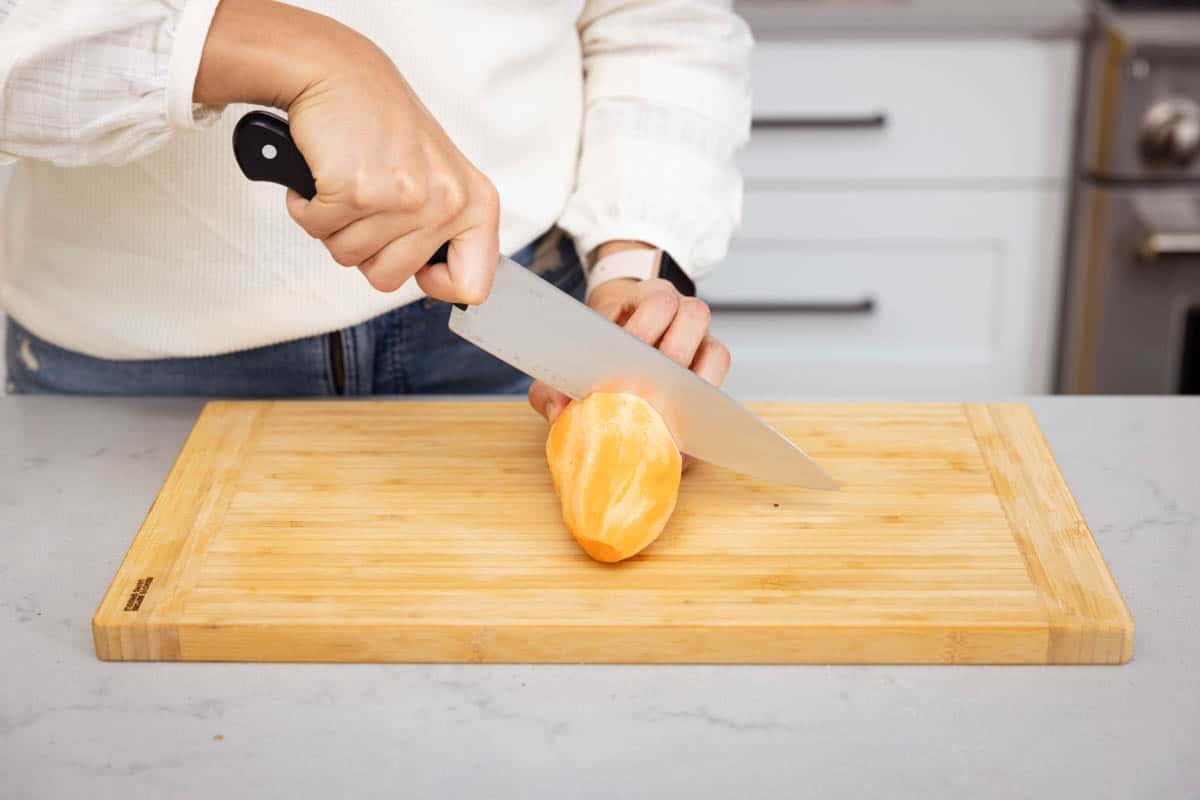
What is a chef knife used for?
- Vegetables and herbs, from the tiniest leaves of thyme to the chunkiest, most thick-skinned butternut squash.
- Raw meat
- Fruit from watermelons to limes.
- Nuts
- Chocolate
- In pinch. . .almost everything. . .

PARING KNIFE
Usually around 3″ to 4″ long, the paring knife’s name comes from its use for peeling and cutting small fruits and vegetables, but this kitchen knife is good for so many fine tasks that beg for a knife smaller than a chef’s knife.
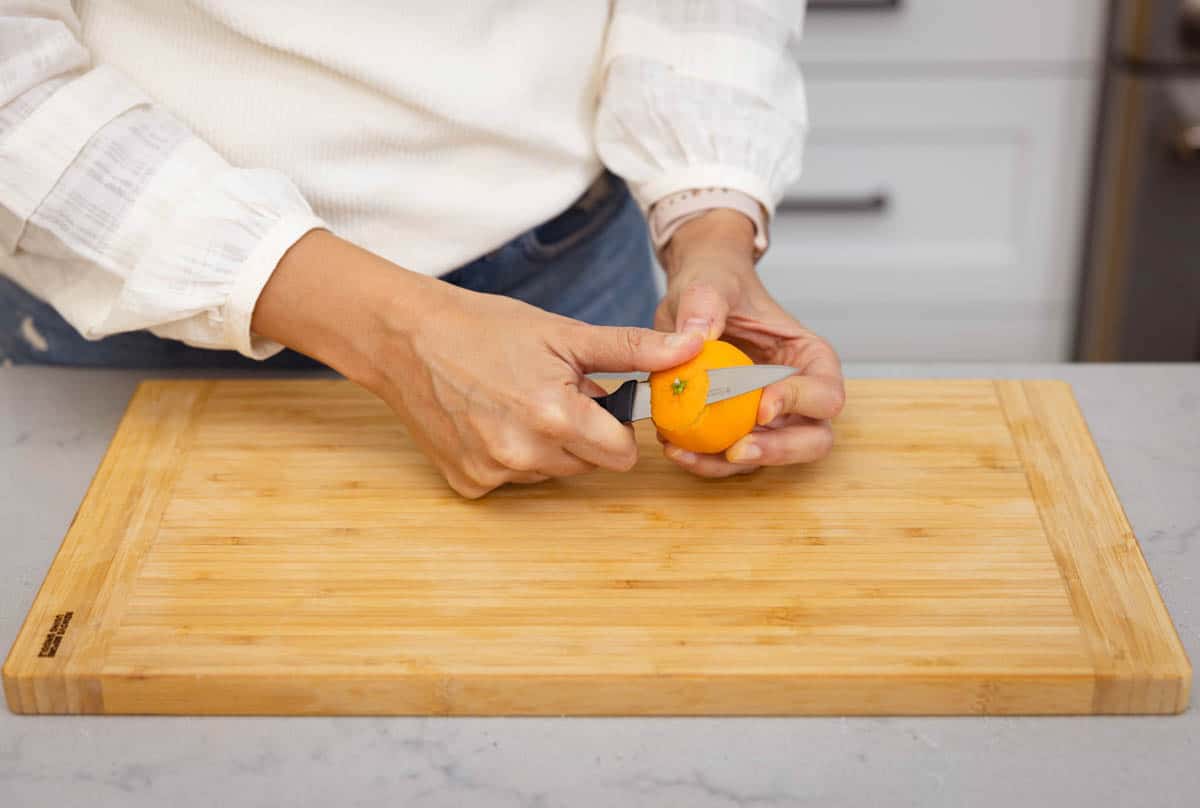
What is a paring knife used for?
- Small pieces of cheese
- De-hulling strawberries.
- Deveining and de-shelling shrimp.
- Sectioning citrus fruits.
- Chopping fine, tiny herbs and vegetables like chives or shallots.

serrated knife
Its saw-like edge makes quick work of delicate foods that can get squished, crumble, or shatter by the force of a regular blade. It can be as large as a bread knife or as small as a steak knife. Especially meant for foods with soft insides.
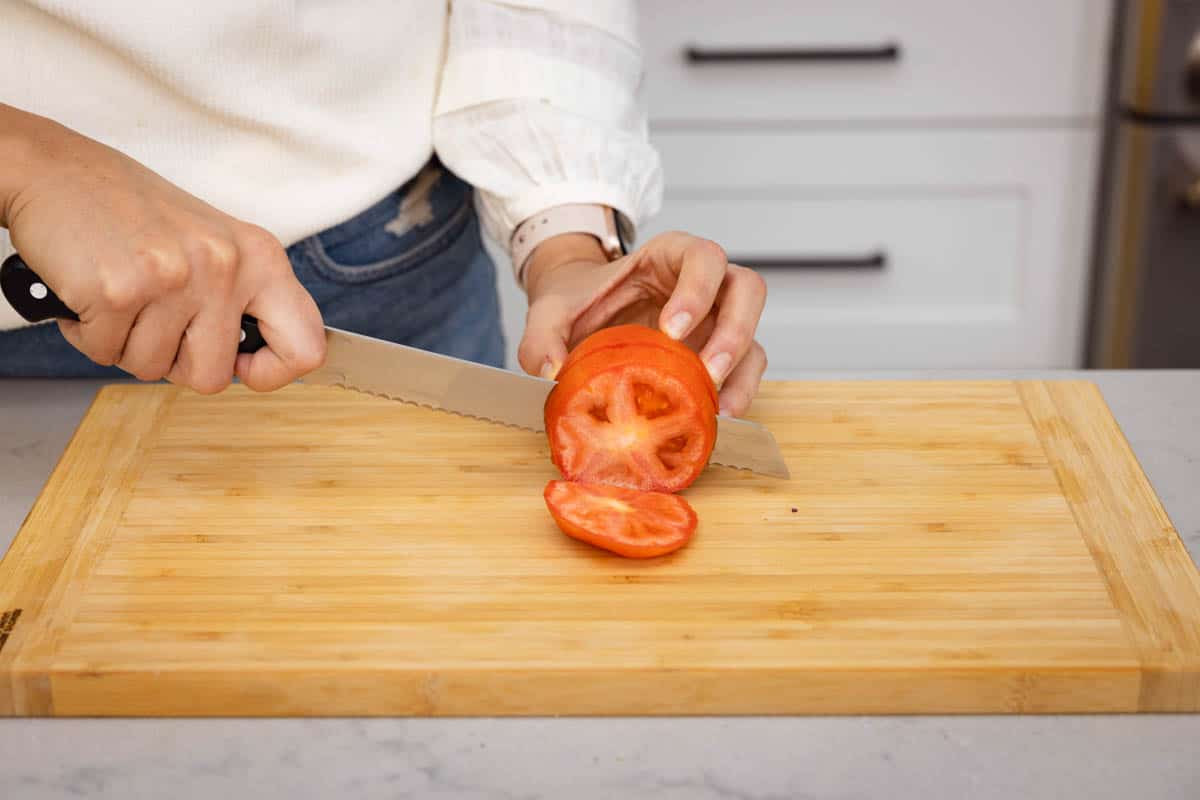
What is a serrated/bread knife used for?
- Bread
- Ripe tomatoes
- Other very ripe fruit, like strawberries or soft avocados
- Cutting through thick-cooked meat like steak
- Filo pastries like baklava or pot pies topped with puff pastry
- Peeled hard-boiled eggs
- Splitting cake into delicate layers

SLICING/CARVING KNIFE
These are the large knives for carving through the meat. They will often sport a series of oval dimples, called Grantons running just above the blade. Grantons reduce friction and prevent food from sticking to the knife.
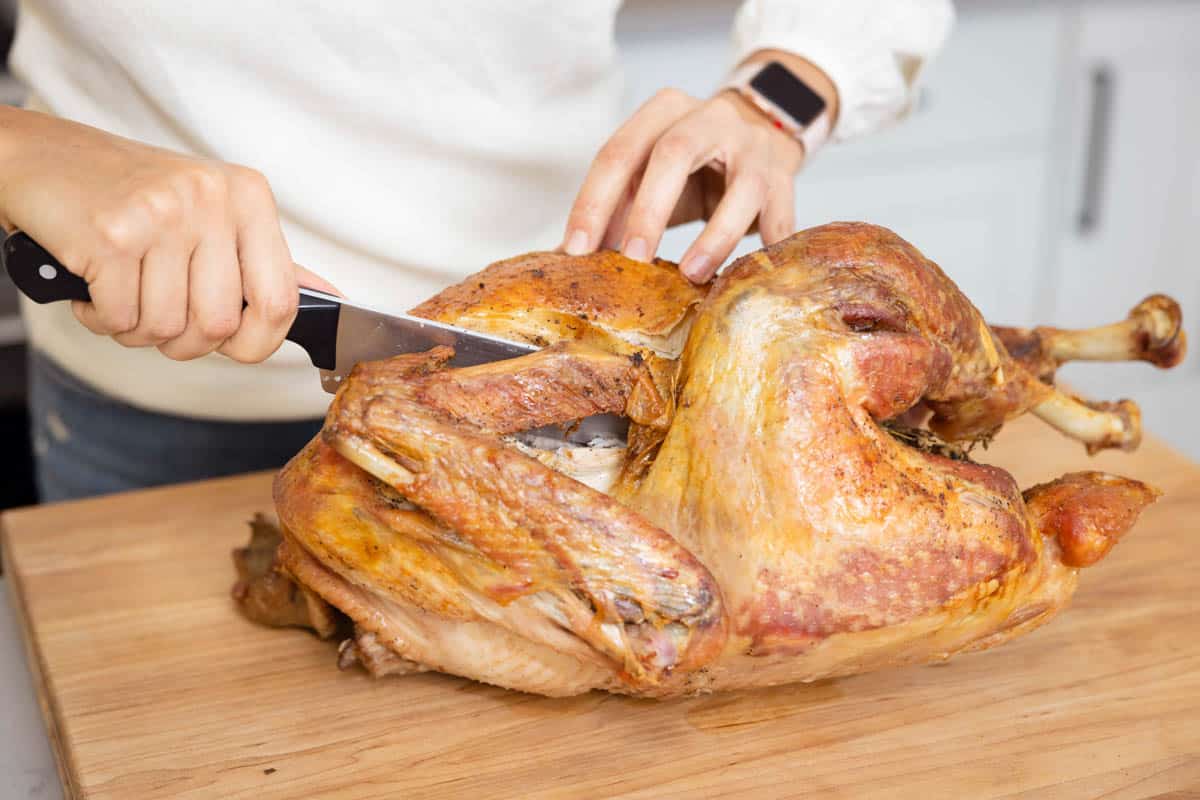
What is a Slicing knife used for?
- Your Thanksgiving turkey and other large pieces of cooked meat.
- Big blocks of cheese
- Vegetables, like cucumber that often stick to other knives.

steak KNIFE
As the name implies, these names are mostly used for cutting steak at the dinner table. They are small knives to use at the table versus at prep to cut through cooked food. They can be serrated, semi-serrated, or non-serrated.

what is a steak knife used for?
- Steak
- Chicken or turkey
- Fish

frequently asked questions
Please do not. If your knives are carbon steel, the dishwasher detergent is too harsh. If they have wooden handles, those will deteriorate quickly, and even when knives are stainless steel, the natural jostling and rubbing against other items in a dishwasher will dull the blades.
All have their advantages. Carbon is sharp but higher maintenance. Stainless steel easy to care for. Ceramic knives are also easy to care for but are not strong enough for some tasks, like cutting through the bone of a chicken.
You must periodically sharpen knives. Learn to use a sharpening stone or steel, buy an electric sharpener, or find a knife sharpener in your area. Follow the manufacturer’s directions. (FYI, serrated knives can be sharpened but need it less frequently.)
The best place for knives is in a knife block or on a magnetic strip. You want to avoid two things: one, being cut for by reaching for a knife in a crowded drawer. Two, having your knives get dull fast by hitting and scraping against other utensils.
Without a doubt – a chef’s knife. It is the most versatile and can be used for pretty much anything you are trying to make. It’s always a good idea to have a couple on hand, in different sizes, to make sure you have the right knife for the job.
knife skills tutorials TO CHECK OUT
- How to cut an avocado
- How to cut an onion
- How to cut carrots
- How to cut a tomato
- How to cut potatoes
- How to cut a melon
- How to cut fresh ginger
- How to cut an apple
- How to cut beets
- How to cut zucchini
- How to cut fennel bulb
- How to chop parsley
- How to cut leeks
- How to cut eggplant
- How to cut broccoli
Final thoughts On Kitchen Knives
There you have it – the five essential kitchen knives that everyone should own. Of course, there are other knives that can come in handy depending on what you like to cook. But if you’re just getting started in the kitchen, or looking to upgrade your current knives, these are the ones you need. With these five types of knives, you’ll be able to tackle any recipe that comes your way.
If you find this Kitchen Knives Guide helpful, we’d love to hear from you! And if you snapped some shots of any of these tips and tricks, please share them on Instagram so we can repost on the Feel Good Foodie stories!
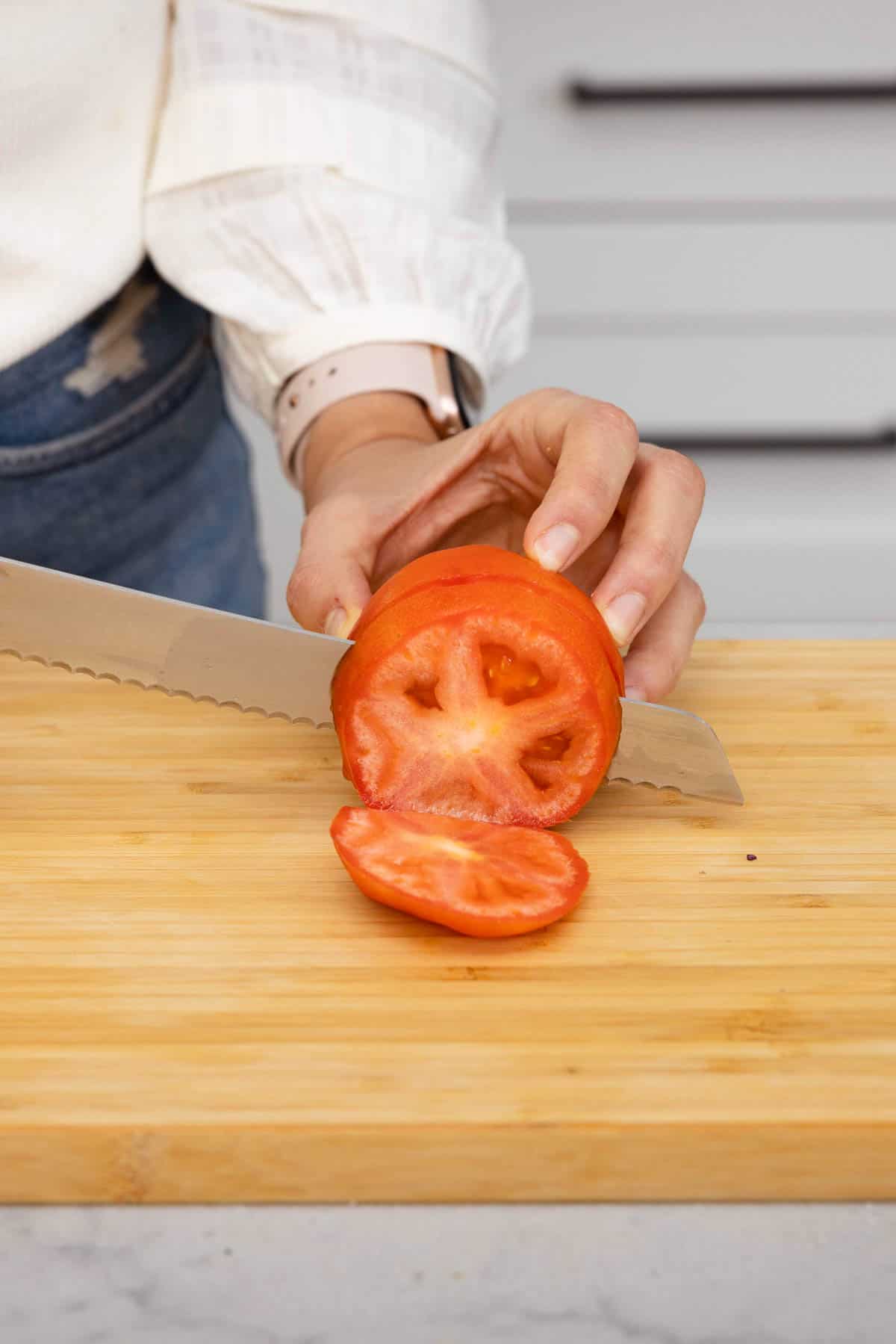






Thank you for the useful information
I greatly appreciated it